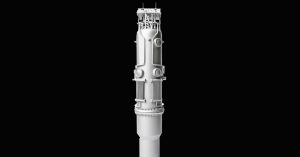A Hasselblad camera is like a Ducati motorcycle—almost no one needs one, but they sure are fun.
The first time I spent this much time with a Hasselblad was in college. The art school had a couple of Hasselblad 500Cs you could rent. The waiting list to get one was months long. At the time I was a large-format purist, shooting mostly with an older Toyo 4×5 field camera I’d found sitting neglected in the back of the supply room. Still, I was curious what all the Hasselblad fuss was about, so I snagged one for the weekend. It was nice, though fiddly—compact, but nowhere near as portable as a 35mm camera. It struck me as a camera designed around a series of compromises. It was made with a different kind of photographer in mind.
More than 20 years later, I feel almost exactly the same way about the Hasselblad X1D II. It’s a wonderful camera that almost no one needs.
Medium-Format Digital
Like it’s predecessor, the X1D II is built around a 50-megapixel CMOS sensor. It’s a sensor that’s 1.7 times larger than a 35mm sensor you’d find in the Nikon 850D or Sony A7R IV. The sensor offers an ISO range of 100-25,600, 14-stop dynamic range, and enough pixels to produce the quality of images you’d expect from a Hasselblad.
Aside from the sensor and the overall design, most of the second X1D is new. There’s a much-improved 3.6-inch rear display with much higher resolution: 2.36 million dots compared with the original’s paltry 920,000 dots. The result is a clear, bright display that makes it much easier to review images and navigate menus.
Hasselblad
The viewfinder resolution is also improved, with 3.69 million dots. Along with that you get a faster refresh rate of 60 fps. The result again is a much improved viewfinder experience. I found myself forgetting that it was in fact a digital viewfinder at all. Then the focus hinting would highlight edges in manual focus mode and I’d remember, ah, right, digital.
Other updates include a USB-C connection port, which lets you download the large image files from that 50-megapixel sensor a lot faster. Since most images take up at least 100 megabytes of space, USB-C is a huge benefit when you’re trying to dump a full shoot from the X1D to your computer.
The Hasselblad menu system is logically organized and hasn’t changed much from previous versions. The huge screen also made it easy to navigate. For context, my primary camera is a Sony A7 II. The menu systems and iconography were similar enough that I had no trouble finding my way around.
The touchscreen is responsive and allows pinch-to-zoom in preview mode. It can also be used as a kind of touchpad to control focus while you look through the viewfinder. It takes some experimentation, but it works as well as joystick/wheel focus controls. Occasionally, my cheek would accidentally redirect focus, but Hasselblad’s touchscreen mostly directs focus smoothly and quickly. That said, Fuji’s joystick mechanism is still my favorite way to control the focus point.
Hasselblad
The X1D II felt like a DSLR, though it’s kinda slow, and there is a longer blackout time between shots. Sluggishness was a common gripe about the first model, which was, by most accounts, positively glacial. Hasselblad is touting the speed improvements in this release, but coming directly from the Sony mirrorless world, I was unimpressed with the performance of the X1D II. I wouldn’t recommend this camera for action sports, and I also missed ordinary shots like some pelicans flying in front of the sunset because the blackout time was too long.
Hasselblad’s strength and background is in studio work, and it shows. You’ll never miss a studio shot with the X1D. You’re also unlikely to miss anything in an outdoor portrait shoot or painstakingly set up landscape. Despite it’s portability, this is not the camera to use if speed matters.
Video is another thing that’s missing. The X1D II lacks support for any video recording. There is, however, a video option in the menu system. I asked Hasselblad about it and was told that “video will be coming up in a firmware update.” No details were given.
To go along with the X1D II, Hasselblad has introduced a new version of its Phocus Mobile app for iPad. Phocus Mobile 2 can import and edit RAW files via USB or Wi-Fi. It also supports tethered shooting and can act as a remote control for the camera. Due to time limitations with the camera, I was not able to test the app. No Android app is available.
Unique Capabilities
Like other Hasselblad cameras, the X1D has what’s known as a leaf shutter—basically a shutter that’s built into the lens, rather than the traditional mirror shutter found in the body of a DSLR. Leaf shutters have pros and cons, but the big pro is that it can sync with an off-camera flash at nearly any shutter speed.
A typical DSLR can achieve flash sync speeds up to the 1/250 of a second range. The X1D II’s shutter system can sync all the way up to 1/2000. That makes it possible to shoot with wide apertures even in bright sunlight and still achieve shallow depth of field.
Scott Gilbertson
This is useful for people who shoot outdoor portraits, since you don’t have to use large strobe lights to overcome the ambient light of the sun. Instead, you can use a quick shutter and increase your depth of field with a wide aperture. In short, a leaf shutter opens up a range of possibilities that simply don’t exist with a focal plane shutter.
Couple this with the portability of the X1D and you have a camera system that can do things your DSLR can’t. Whether or not you’re interested in these things will determine how well the X1D II is going to work for you.
Cost of Goods
At $5,750 plus the cost of lenses—which are also expensive, thanks to the leaf shutter design, the Hasselblad is not a casual purchase. The 45mm lens I shot with will set you back another $2,695, bringing the total outlay for body and one lens to nearly $8,445. On one hand, that’s less than the sticker price of the first X1D ($8,995). On the other hand, should you spend that much money on a camera? Probably not.
Unless you’re already a professional photographer making good money, this is not the camera for you. Buy a $1,000 Sony, and use the other $7,000 to backpack the world for a few months. Chances are you’ll end up with a far more interesting portfolio than you get from the Hasselblad.
(The Hasselblad X1D II is available for $5,750 at B&H Photo, Adorama, and Hasselblad’s Store.)



